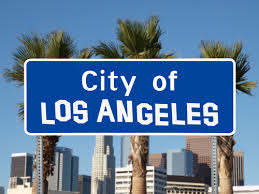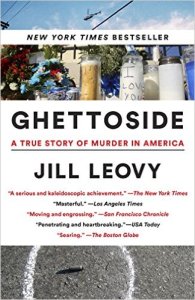After I moved to Los Angeles in 1996, I made it my business to scour the city’s newspapers for reported crimes. An instinct for self-preservation drove me to it. As a native New Yorker I knew about violent crime. Muggings, wildings, rapes, murders — in the 70s, 80’s and 90’s in New York City — were commonplace.
The fact that New York streets run on a grid and are numbered makes it easier to find your way from point A to point B. N, S, E and W make sense and are relevant to the grid. Or, you can always hail a cab. This is not so in Los Angeles.
Shortly after I moved there in ’96., a horrifying crime occurred. Because the victims were a family of white tourists, the crime made the newspapers. Driving at night, the family was navigating L.A.’s meandering, confusing streets when they lost their way. They turned down the “wrong” block — i.e., into “gang territory” — a fatal mistake. Their punishment was death by gunfire.
Reading about that crime not only freaked me out — that gangs were a reality in L.A. — it caused me to wonder, was this an isolated incident?
In L.A., you need a car. You hardly ever walk, except on the beach or from the parking lot to your final destination. The limited metro system extends only so far and L.A. is a sprawling city. So my first order of business after settling in was to: 1) buy a car; and 2) buy a Thomas Guide book of maps (it was the pre-GPS era).
Terrified of getting lost, whenever I needed to visit a new place, I would pore over the Guide and plot out the most direct route. The more freeways involved, the better.
Street maps in the Thomas Guide soon proved insufficient. I wanted statistics about individual neighborhoods and needed an overview rather than pages and pages of small sections of the city viewed one at a time. My eureka moment came while searching online. I stumbled on the site called the Los Angeles Homicide Report (click on this link to read a sample).
Reading a review of the book in The NY Times and recalling my years spent in L.A. (I moved back to NYC in 2009) are what drew me to Jill Leovy’s gripping, prodigiously researched page-turner: Ghettoside: A True Story of Murder in America.
Leovy, as it happens, had been a writer for the online Homicide Report mentioned above (back when I first discovered the site it was called the Homicide Blog for The Los Angeles Times).
What exactly is Ghettoside? The word is part of the police lexicon that refers to black-on-black murder in Los Angeles.
Here is how Leovy describes the motivating factors for “ghettoside”in her book:
“The smallest ghettoside spat seemed to escalate to violence, as if absent of law, people were left with no other means of bringing a dispute to a close. Debts and competition over goods and women—especially women—drove many killings. But insults, snitching, drunken antics, and the classic—unwanted party guests—also were common homicide motives.”
The festering underbelly of ghetto life in L.A., as in most cities, is characterized by poverty and hopelessness. People living in poor sections of L.A. have a hard time believing the police care about the murders of black people. Alternatively, homicide detective working the cases are continually frustrated in securing convictions due to the lack of witnesses coming forward to testify — at the same time understanding why people choose not to testify (they don’t want to be shot; don’t want their family members shot; basically, they want to remain alive).
The main thread of the book centers around the killing of the young son of a black homicide detective, a detective who not only works but lives with his family in the Watts and Compton area of south L.A., a dangerous place. The hunt for and capture of the boy’s murderers is undertaken by members of the same squad as the father of the victim. This is what drives the narrative.
Leovy’s writing is absorbing, detailed and eloquent. She vividly fleshes out each homicide detective and gang member involved in the cases. You see and feel them. Equally compelling are descriptions of the residents of Watts and Compton as they struggle to get by, go to work and raise families — and, sometimes, dodge bullets. Their sorrow mixed with resignation mixed with anger is palpable. Any stereotypical viewpoints you may have harbored previously fall away.
Gang bangers, as I learned, have a lexicon all their own. An excerpt:
“One almost never heard the word “murder” on the streets. Euphemisms served instead: “puttin’ in work,” to “serve” someone, to “smoke” him, to “lay him out,” to “light him up,” to “take care of business”—the list went on. Bloods, Crips, and Hoovers had their own trademark verbs for attacking and hurting other human beings—“swoopin’,” “movin’,” “groovin’.”
“…Caught slippin’ ” meant letting your guard down—a momentary slip could kill you. “Catch a fade” meant a fight. The gang term “DP” was an acronym for “discipline.” It meant roughing someone up to punish him for something.”
The book is a tour de force. The descriptions of gang members and what they are capable of, at times, will make your skin crawl. However, when the dedicated homicide detectives in this squad get gang bangers into the interrogation room, their skilled interview techniques not only root out information, they humanize the criminal. The reader comes to realize that most of these gang bangers were “raised” by violent criminals, themselves; abused; never had a chance.
L.A. homicide detectives refer to “ghettoside” as The Monster. The Monster is chillingly nailed by Snoop Dogg, a former member of the Crips, in his song (Drop It Like It Hot):
For those who love criminal investigation, reading Ghettoside is a must.

